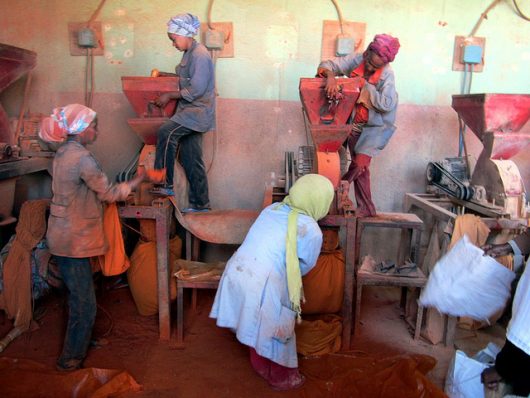Reducing the Spread of Diseases in Eritrea
 Eritrea is a northeast African country on the Red Sea coast with a population of 5.8 million. In recent decades, Eritrea has made great strides in improving the health of its population as part of the Millennial Development Goals. In particular, Eritrea has focused on child health and has made progress in eliminating childhood diseases such as measles with improved immunization and nutrition programs. Between 1993 and 2008, the number of Eritreans vaccinated against measles skyrocketed from 34 percent to 95 percent. Diseases in Eritrea remain a consistent health threat, however, because despite these health improvements, poverty in the country creates health challenges.
Eritrea is a northeast African country on the Red Sea coast with a population of 5.8 million. In recent decades, Eritrea has made great strides in improving the health of its population as part of the Millennial Development Goals. In particular, Eritrea has focused on child health and has made progress in eliminating childhood diseases such as measles with improved immunization and nutrition programs. Between 1993 and 2008, the number of Eritreans vaccinated against measles skyrocketed from 34 percent to 95 percent. Diseases in Eritrea remain a consistent health threat, however, because despite these health improvements, poverty in the country creates health challenges.
Much of Eritrea’s current health concerns revolve around vecsor-borne and mosquito-borne illnesses such as Yellow Fever and Malaria. Malaria has been one of the country’s top concerns in recent decades, as Eritrea has made a conscious effort to reduce the spread of the disease and joined the African Leaders Malaria Alliance. Since approximately 70 percent of the population lives in high-risk areas, the Eritrean government has responded with a variety of strategies, such as the promotion of national campaigns and community based-programs encouraging medical checkups. Today, nearly 70 percent of children below age five now sleep under insecticide-treated nets, and more than 60 percent of citizens own at least two ITNs. These measures have succeeded, helping Eritrea reduce annual malaria incidence by 85 percent between 1998 and 2012.
As a whole, Eritrea’s vaccination coverage has improved so much that it is now among the top African countries based on DTP3 disease coverage. DTP3 immunization, which covers diphtheria, tetanus and pertussis, has been at 99 percent since 2008, far above the African average of 64 percent.
However, diseases connected to diet and nutrition such as diabetes and diarrheal diseases also pose a threat to the Eritrean population. An estimated 22,700 children under five are projected to be affected by severe acute malnutrition (SAM) in 2017, and according to national data, half of Eritrean children are stunted. UNICEF Eritrea has made fighting these diseases a top priority, and provides women and children with water and nutritional supplies as well as hygienic services and child protection services as part of its Humanitarian Action for Children.
One of the main issues preventing Eritrea from further reducing the spread of disease is the lack of doctors and physicians in the country. Although the number of physicians in Eritrea doubled in recent years, medical staffing remains far below estimated needs and targeted goals for the future, and as a result, diseases like tuberculosis and yellow fever remain a threat.
In the future, Eritrea can look to its success with controlling the spread of malaria as a prime example of the effectiveness of awareness campaigns coupled with immunization and nutrition programs. As Eritrea grows as a country, it will face new health concerns regarding immunization and disease. Preventing diseases in Eritrea will continue to be a part of the government’s goals as part of the 2030 Millennial Development Goals, as the country aims to secure a prosperous future for its people.
– Nicholas Dugan
Photo: Flickr
